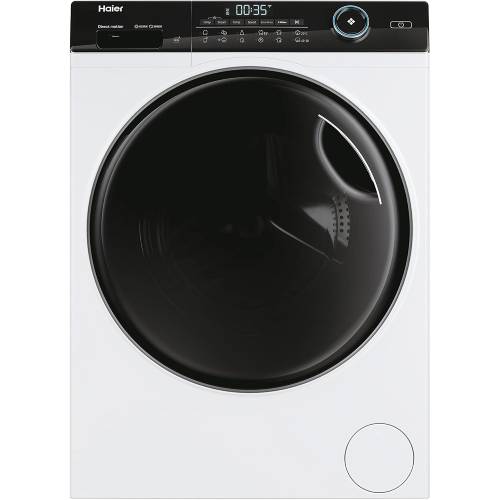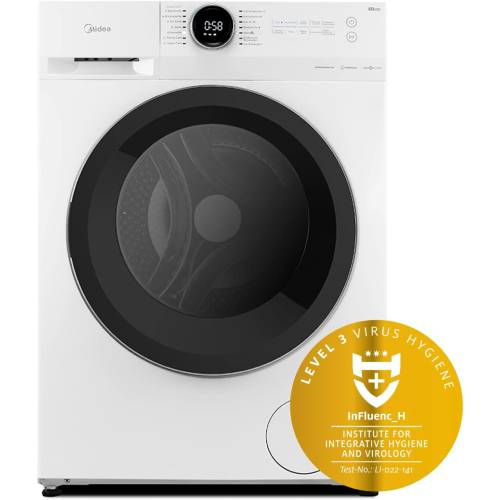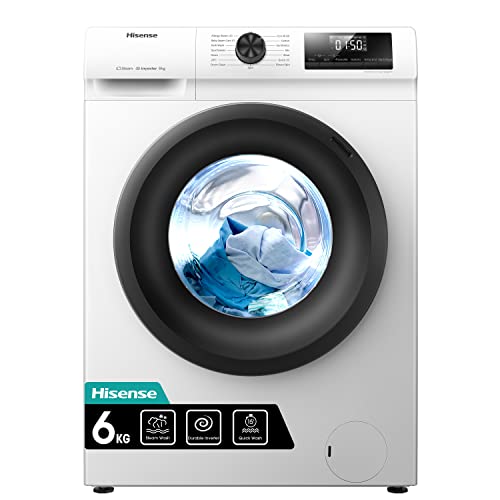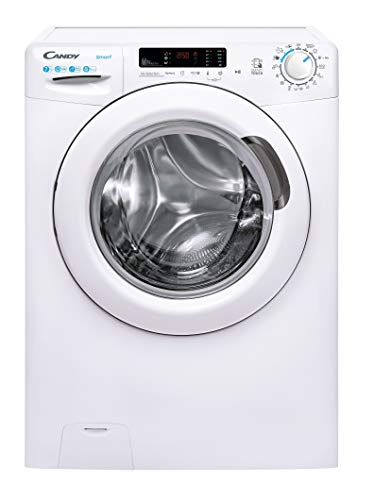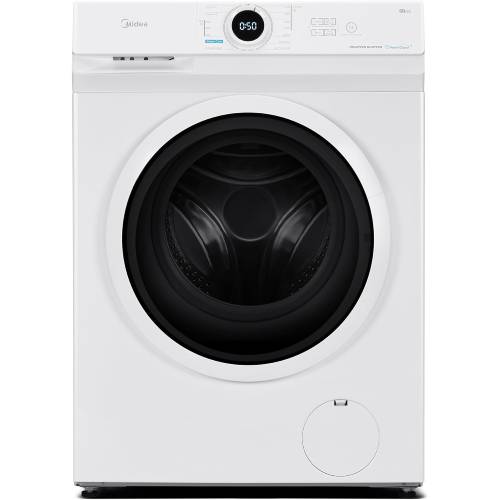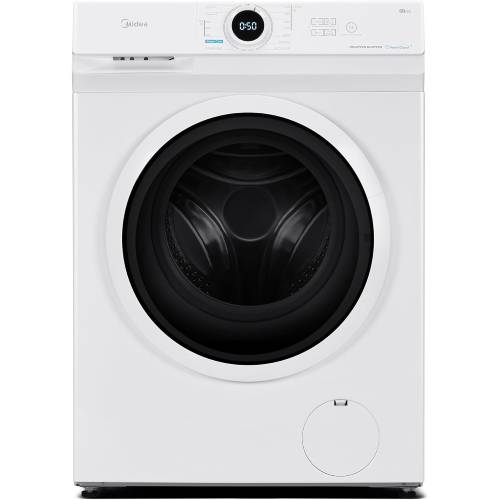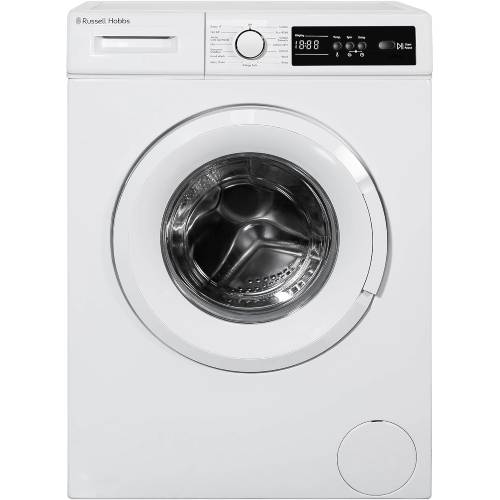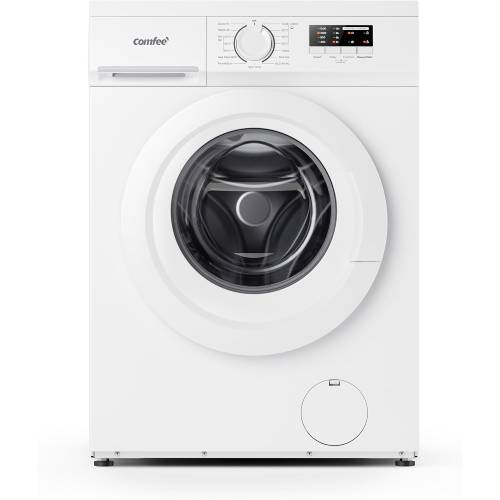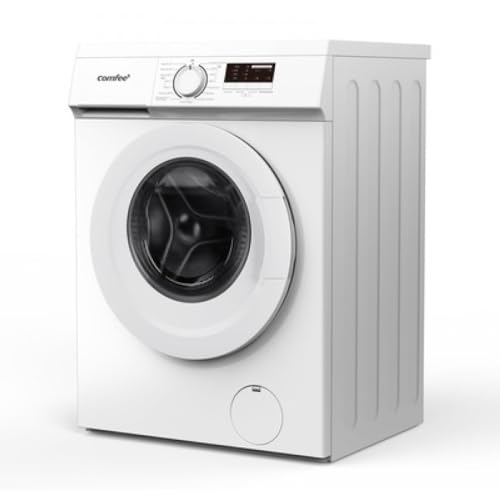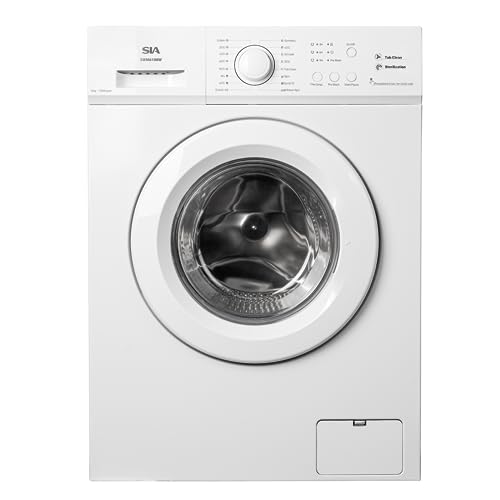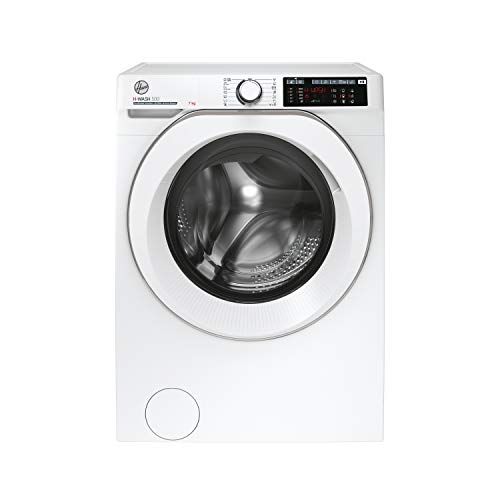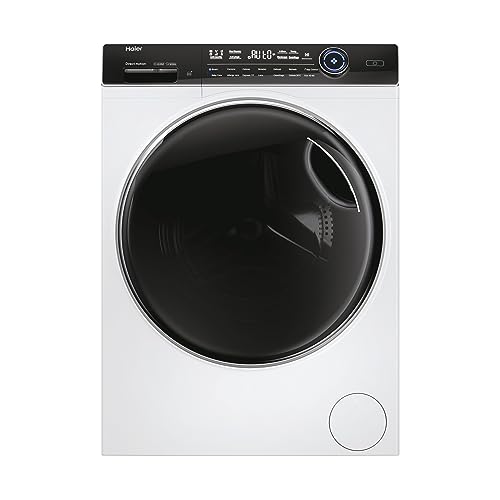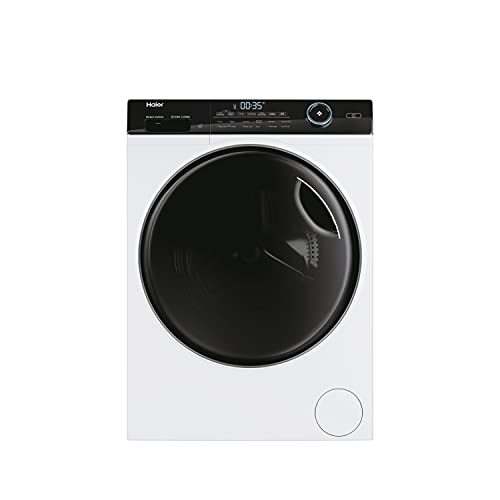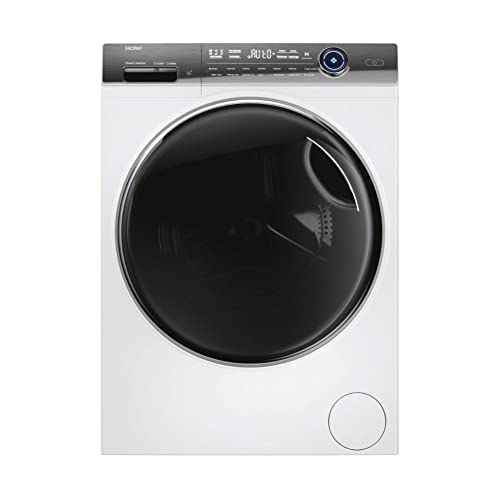How many cm is a slim washing machine?
A washing machine is considered slim if it has a depth of 50 cm or less, and super-slim if the depth is 45 cm or less (you can also find 40 cm washing machines).
The following list includes the slimmest washing machines currently available on the market.
- Comfee CFE10W60 (Depth: 40 cm; Capacity: 6 kg)
- Comfee CFE10EW60/W (Depth: 40 cm; Capacity: 6 kg)
- SIA SWM6100W (Depth: 44 cm; Capacity: 6 kg)
Are slim washing machines good?
Slim washing machines are good but tend to achieve slightly lower results compared to the market average. They achieve an overall score of 6.7 points, compared to the market average of 7.1 points. Slim washing machines do not belong to the best washing machines on the market.
Slim washing machines also have slightly lower user ratings than larger models, with an average of 8.1 user rating points.
The best slim washing machines (with the highest total score) are as follows.
- Haier HW90-B14959U1 I-Pro Series 5 (Total score: 7.91 points; Depth: 50 cm)
- Midea MF200W70B/E (Total score: 7.12 points; Depth: 49.5 cm)
- Hisense WFQP6012EVM QP Serie (Total score: 7.1 points; Depth: 45 cm)
The following list includes the slim washing machines with the highest user ratings.
- Hisense WFQP9014EVM QPSerie (User rating: 8.88 points; Capacity: 9 kg; Depth: 45 cm)
- Hisense WFQP6012EVM QP Serie (User rating: 8.88 points; Capacity: 6 kg; Depth: 45 cm)
- Midea MF200W70B/E (User rating: 8.88 points; Capacity: 7 kg; Depth: 49.5 cm)
What are the main advantages of slim washing machines?
The main advantages of slim washing machines are as follows.
- Lower cost: Slim washing machines cost approximately £60 less than non-slim models (averaging £320 compared to the market average of £380).
- Good quality-price ratio: Slim washing machines offer a quality-price ratio of 7.2 points.
- Popularity: Slim washing machines have an average popularity score of 6.3 points.
- Compact size: Slim washing machines take up about 18% less space than non-slim models (0.23 m³ compared to 0.28 m³).
- Lower water consumption: Slim washing machines use about 2 liters less water per cycle compared to the market average (44 L vs. 46 L).
- Inverter motor: 60% of slim washing machines are equipped with an inverter motor.
- Faster ECO cycle: Slim washing machines complete an ECO cycle on average 10 minutes faster than most other washing machines (208 min vs. 218 min).
- Specialized washing programs: Slim washing machines often include cycles such as Steam, Duvet, Jeans, Shirts, Baby Care, Hygiene, and Anti-Allergy.
- Customizable cycles: Slim washing machines offer options such as the anti-stain function, extra rinse function, and pre-wash function to adjust cycles.
- Advanced features: Almost all slim washing machines include features such as the foam control system, load balancing system, laundry detection system, and self-cleaning function. Many also feature the AquaStop system, steam technology, memory function, or smart diagnosis function.
- Smart technology: Some slim washing machines are equipped with Wi-Fi connectivity or AI technology.
What are the main disadvantages of slim washing machines?
Slim washing machines have the following disadvantages compared to standard-size washing machines.
- No top-loading option: Slim washing machines are not available with top loading.
- Lower capacity: Slim washing machines usually have a lower capacity than the market average (7 kg vs. 8 kg).
- Smaller drum volume: The average drum volume of a slim washing machine is about 10 liters less than the market average (48 L vs. 58 L).
- Lower energy efficiency: Slim washing machines are less energy-efficient. Only 26% have an A class compared to 39% of all washing machines, and they consume about 9% more energy (an average of 60 kWh per 100 cycles compared to the market average of 55 kWh).
- Fewer low-speed options: Only 48% of slim washing machines can reach a minimum spin speed of 400 rpm, compared to 67% of all washing machines, which is better for washing delicate items.
- Slightly noisier: Slim washing machines are slightly noisier both during spinning (76 dB vs. 75 dB) and washing (58 dB vs. 53 dB) compared to the market average.
- Limited advanced features: Few slim washing machines include advanced features such as AquaStop systems, pre-mix technology, automatic drawer cleaning, or automatic dosing systems.
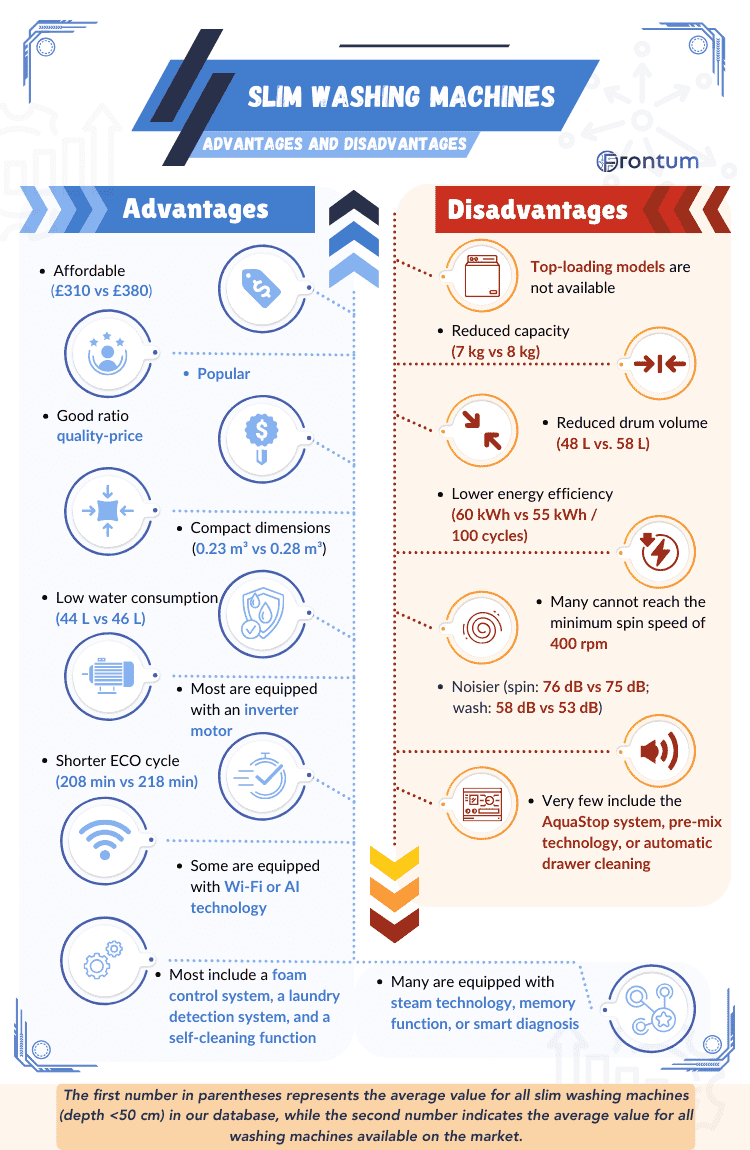
How much do slim washing machines cost?
Slim washing machines cost between £200 and £600, with an average price of around £320. Slim models are approximately £90 cheaper than non-slim washing machines, whose average price is around £410.
The price distribution of slim washing machines is illustrated in the following chart.
[vertical-chart-44641556]
Thanks to their lower price, slim washing machines have an average quality-price ratio score of 7.2 points, which is higher than the market average.
The cheapest slim washing machines are as follows.
- SIA SWM6100W (~£200, 44 cm)
- Comfee CFE10EW60/W (~£200, 40 cm)
- Comfee CFE10W60 (~£210, 40 cm)
The following slim washing machines offer the best quality-price ratio.
- Midea MF200W70B/E (Quality-price ratio: 7.9 points; Depth: 49.5 cm)
- Hisense WFQP6012EVM QP Serie (Quality-price ratio: 7.89 points; Depth: 45 cm)
- Midea MF10EW70BA (Quality-price ratio: 7.42 points; Depth: 47.5 cm)
What are the best brands of slim washing machines?
The best brands of slim washing machines are as follows.
- Haier (Average total score: 7.7 points)
- Hoover (Average total score: 7.6 points)
- LG (Average total score: 7 points)
The chart below shows the brands of slim washing machines ranked by their average total score.
[horizontal-chart-51148163]
The following brands of slim washing machines offer the best quality-price ratio.
- Midea (Average quality-price ratio: 7.4 points)
- Hisense (Average quality-price ratio: 7.3 points)
- Comfee (Average quality-price ratio: 7.3 points)
What should you consider when choosing the best slim washing machine?
When choosing the best slim washing machine, consider the capacity, drum volume, energy consumption, water usage, spin efficiency, noise level during washing, type of motor, and the number of washing programs available.
What is the capacity of slim washing machines?
Slim washing machines have capacities ranging from 4 to 10 kg. The most common capacities are 7 kg (48%), 6 kg (22%), and 8 kg (9%). The drum volume typically ranges from 40 to 60 liters, with an average of 48 liters (10 liters less than the market average of 58 liters).
The chart below illustrates the capacity distribution of slim washing machines.
[pie-chart-88003136]
Slim washing machines are compact, occupying between 0.18 and 0.25 m³ of space, with an average of 0.23 m³. Compared to non-slim models, they use about 18% less space.
The best slim washing machines with a 7 kg capacity are as follows.
- Midea MF200W70B/E (Depth: 49.5 cm; Total score: 7.12 points)
- Candy Smart CS41272DE (Depth: 45 cm; Total score: 6.66 points)
- Midea MF10EW70BA (Depth: 47.5 cm; Total score: 6.66 points)
Are there top-loading slim washing machines?
Top-loading slim washing machines do not exist. All top-loading washing machines have a depth exceeding 60 cm. Slim washing machines are exclusively available in front-loading models.
Top-loading washing machines can be a good option if you're looking for a machine with reduced width. They are typically around 40 cm wide, much smaller than the average width of front-loading washing machines, which is about 60 cm.
What is the energy efficiency of slim washing machines?
Slim washing machines are less energy-efficient compared to non-slim models. The energy classes of slim washing machines range from A to F, with Class D being the most common (34%), followed by Class A (34%) and Class C (11%).
In comparison, 39% of all washing machines on the market belong to Class A, 17% to Class B, while only 26% of slim washing machines are in Class A, and 9% in Class B.
Slim washing machines consume between 42 and 85 kWh per 100 cycles, with an average of 60 kWh—about 10% more than the market average of 55 kWh. Class A washing machines consume less than 49 kWh per 100 cycles, and Class B less than 55 kWh, although this can vary slightly depending on capacity.
Water consumption for slim washing machines ranges from 35 to 50 liters per cycle, with an average of 44 liters (2 liters less than the market average of 46 liters).
Energy class and consumption are crucial for those aiming to save on electricity and water. If efficiency is important to you, consider washing machines with higher energy classes and lower consumption.
The following chart illustrates the distribution of energy classes among slim washing machines.
[pie-chart-35955997]
The most energy-efficient slim washing machines (those with the lowest energy consumption) are as follows.
- Midea MF10EW70BA (Energy consumption: 44 kWh/100 cycles per 100 cycles; Depth: 47.5 cm)
- Haier HW90-B14959U1 I-Pro Series 5 (Energy consumption: 49 kWh/100 cycles per 100 cycles; Depth: 50 cm)
- Midea MF10EW90BA (Energy consumption: 49 kWh/100 cycles per 100 cycles; Depth: 47.5 cm)
What is the spin efficiency class of slim washing machines?
The spin efficiency class of slim washing machines ranges from B to D. Class B is the most common, representing 70%, followed by Class C with 27%.
In comparison, 85% of all washing machines on the market are Class B, so slim models slightly lag in this area.
The spin efficiency class measures a washing machine's ability to remove water from clothes during the spin cycle and is a key indicator of how dry the clothes will be at the end of the wash.
Efficiency is closely related to the maximum spin speed, which for slim washing machines ranges from 1000 to 1400 rpm. The most common speeds are 1400 rpm (36%) and 1200 rpm (38%).
For a better understanding of spin efficiency: a speed of 1600 rpm leaves approximately 43% moisture in clothes, 1400 rpm leaves 50%, and 1200 rpm leaves 53%. Higher spin speeds result in drier clothes, reducing drying times and energy consumption.
If you often wash delicate items, consider the minimum spin speed. Using a lower speed helps protect delicate fabrics from damage. Slim washing machines have minimum speeds ranging from 400 to 800 rpm. 48% of slim models reach a minimum spin speed of 400 rpm, compared to 67% of all washing machines on the market.
The chart below shows the distribution of spin efficiency classes among slim washing machines.
[pie-chart-94912444]
Are slim washing machines quiet?
Slim washing machines tend to be slightly noisier than the market average. The spin noise level ranges from 70 dB to 80 dB, with an average of 76 dB (compared to the market average of 75 dB). The spin noise level is crucial as it represents the noisiest phase of the washing process.
The chart below illustrates the distribution of spin noise levels among slim washing machines.
[vertical-chart-26926625]
Most slim washing machines fall into Noise Emission Class B (53%), followed by Class A (25%).
Class A corresponds to a spin noise level below 73 dB, Class B ranges from 73 to 76 dB, Class C ranges from 77 to 80 dB, while Class D exceeds 80 dB. In comparison, among all washing machines on the market, 37% belong to Class A, 35% to Class B, 26% to Class C, and 3% to Class D.
If noise is a concern, consider the washing noise level, which is lower than that of spinning. For slim washing machines, the washing noise level ranges from 50 to 62 dB, with an average of 58 dB (higher than the market average of 53 dB).
The noise level is relevant if you plan to use the washing machine in living areas, near bedrooms, or at night.
How many washing programs do slim washing machines have?
Slim washing machines come with 10 to 16 washing programs, with 15 programs being the most common. These programs are similar to those found in standard-sized washing machines. Basic programs include Eco 40-60, Cotton, Synthetics, Mixed, Wool, Quick Wash, Rinse and Spin, Spin, and 20°C.
The number of washing programs in slim washing machines is distributed as follows.
[vertical-chart-91980595]
For specialized cycles, slim washing machines may vary slightly. Approximately 48% of models have a Duvet cycle, 31% include a Jeans cycle, 43% have a Shirts cycle, 46% feature a Hygiene cycle, 42% have a Baby Care cycle, and 55% offer an Outdoor/Sport cycle.
The Eco cycle on slim washing machines typically lasts between 180 and 240 minutes, with an average of 208 minutes—10 minutes shorter than the market average of 218 minutes. Additionally, most slim washing machines offer 1–3 quick cycles that last less than an hour.
Slim washing machines are equipped with various washing functions, but these functions are generally less common compared to non-slim washing machines, such as:
- Extra rinse function (70% vs. 84%)
- Anti-crease function (40% vs. 71%)
- Anti-stain function (41% vs. 74%)
- Quick wash function (26% vs. 49%)
- Wash assist function (19% vs. 31%)
Very few slim washing machines include silent function, Aqua+ function, or soak function.
What are the common features of slim washing machines?
Slim washing machines have between 3 and 15 advanced features, with an average of 7 features—lower than the market average of 10 features. These machines are designed to save space without compromising essential functionality but tend to have fewer features compared to their non-slim counterparts.
The number of features in slim washing machines is distributed as follows.
[vertical-chart-17912060]
Almost all slim washing machines include the foam control system, unbalanced load detection, laundry detection system, overflow protection, and self-cleaning function—standard features in many models.
Many slim washing machines also include features such as steam technology (51%), load balancing system (46%), memory function (27%), and smart diagnosis (42%). However, features like AquaStop system (19%), Wi-Fi connectivity (9%), AI technology (6%), automatic drawer cleaning (<3%), pre-mix technology (4%), and automatic dosing system (<3%) are less common in slim models but are more frequently found in standard-sized washing machines.
The slim washing machines with the most features are as follows.
- Haier HW90-B14959U1 I-Pro Series 5 (17 features; Depth: 50 cm)
- Candy Smart CS41272DE (16 features; Depth: 45 cm)
- Hisense WFQP9014EVM QPSerie (10 features; Depth: 45 cm)

